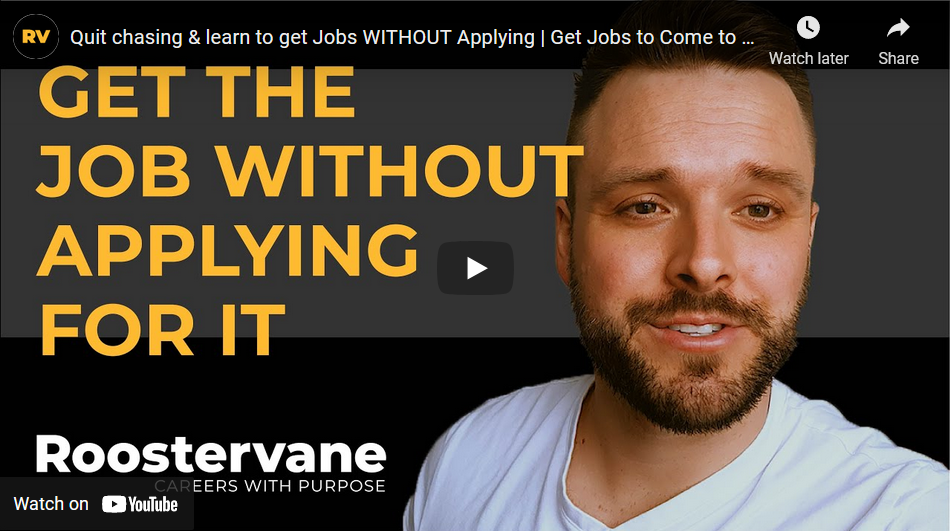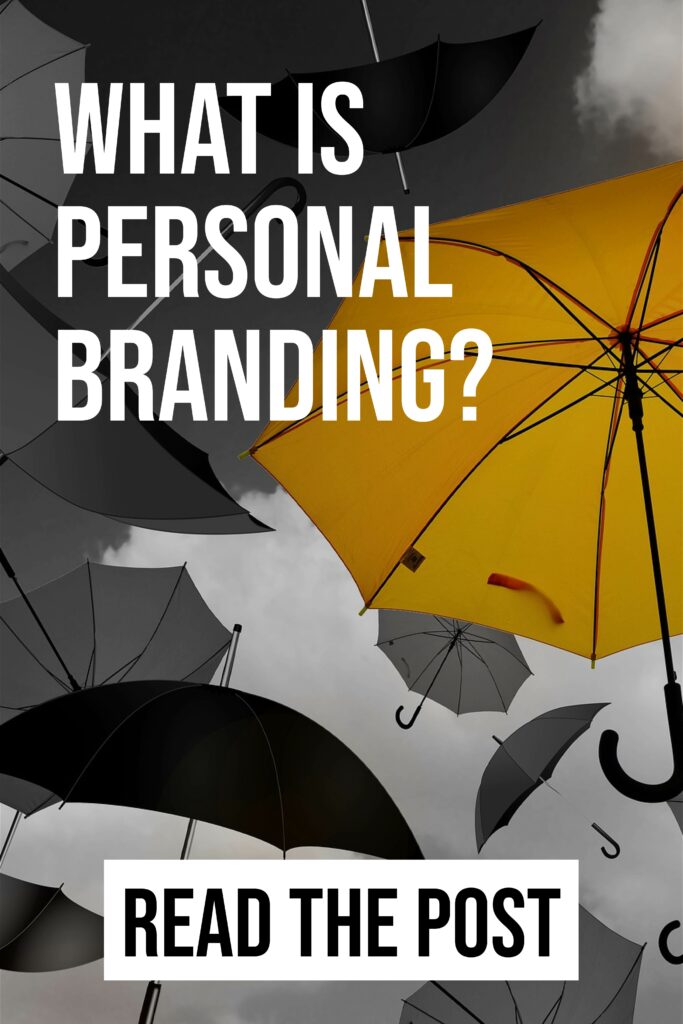Hey Everyone! Chris has handed the reins over to me for this one and I am excited to talk about branding with you…personal branding to be specific.
As the Brand strategist here at Roostervane, I think a lot of about brand identity and the message we are sending as you navigate all of our online touch points and consume our content. It isn’t any different when people are connecting with you personally and consuming your content online. I specialize in working with everyone from entrepreneurs to large companies to develop their brand identities. I have a serious passion and love for my work and am excited to talk this out with you.
So what is personal branding and why should it matter to you?
To be honest, it doesn’t have to. Most individuals don’t give personal branding a second thought. For a large international corporation brand strategy is paramount, but for you?
Here’s why I think you should put a little bit of effort into this:
Nobody else is.
You can spend just a few hours thinking about this and writing some things down and it will put you miles ahead of the room full of people waiting for the same interview. A brand gives you clarity, consistency, and confidence. In a networking situation or interview, that’s a game changer.
Ok here we go.
But first a very quick lesson. What is a brand?
It can be a very complicated question and I could talk your ear off about it…but don’t worry, it doesn’t have to be and I won’t.
Here it is.
Your brand is the gut feeling you give people.
That’s it.
What do people think and feel after they have interacted with you? You might think that you don’t have any control over this, after all you are who you are, but I’m here to say that you do. Companies spend hundreds of thousands of dollars developing brand strategy. But like I said earlier, this doesn’t have to be a 6 month-long introspective quest for you and you certainly don’t need to spend any money on this.
Developing your personal brand simply means that you are gently directing people toward discovering who you really are. Inconsistencies can lead to being misunderstood. Disorganization can lead to you seeming unprofessional. You don’t need to go wild but let’s be a little intentional about it shall we?
And one last thing, a very simple rule:
No lying.
You can’t be something that you’re not. So don’t try. This is about putting your authentic self out there and being organized about it. So go into this exercise with honest intentions.
So there are a few ways I could go about this. I could list off 10 questions I think you should ask yourself and send you on your way, but I’m going to challenge you to think a little deeper. I want you to think of yourself as a business.
When I go through this process with a business, I explain that they have control over three things: Messaging, Aesthetic, and Experience. The great branding expert and author, Marty Neumeier wrote about this in his book, The Brand Gap. These three touch points get absorbed by clients/customers, they form their perception of you and that is your brand. If you think of it that way, you can break things down quite easily.
1 – Messaging
What are you saying? What is your voice? What do you say when someone asks you what you do? If you are in academia and considering what it will be like to get a job on the outside, you have to give this some thought.
First, consider the content of your message. I understand that you may not like to boil down your research to a simple sentence but I dare you to try it. What you’re studying is significant and it can be relatable but you have to make it so.
There was a time when Chris would worry about this, particularly if we were on our way to a holiday party or something. He’d say: “I don’t know what to tell people when they ask me what I do.” He was worried about sounding snobby or too intellectual. Finally I just said to him: “Well, I can tell you what I say to people when they ask me what you do.” So I did. He immediately let out a big *sigh and said: “There. Thank you. That’s what I’ll say.” I dare you to ask your best friend or partner to explain what you study. Try it out on your friends and family first and it will help you in networking situations and in interviews.
When I ask business owners to tell me what they do they have a lot trouble boiling it down too! They can’t write out a book for their customers to read. What they say about their business has to be intentional and concise. In your case, your “customer” is the lady sitting next to you at an event at your department and your potential employer. Sit down and give some thought to what you say.
Second, I want you to consider your value. From my perspective, academia can make you feel like you are your research and that’s all you bring to the table. You can be left with a very limited sense of self. Your research is just a piece of the puzzle that is you. What else do you bring to the table? Even if you’re pursuing a career in academia, you should still consider who you are and what makes you a great employee.
Are you creative? Do you collaborate well? Are you empathetic? Are you organized? Do you like to run events? Write a bank of words and phrases. Be honest and turn them into sentences that you could potentially say to someone in a networking situation. For example, if you collaborate well with your colleagues, you could say that you “work well on a team” or that “people enjoy working with you”.
I get that this is some simple shit, but so few people take the time to organize themselves in this way. Your boss needs to picture what it’s going to be like working with you everyday.
Who are you? What’s your message? Keep it simple and be consistent all the time.
2 – Aesthetic
I’m in the business of visual marketing. When I am sitting in my first meeting with a client and they are telling me about their craft brewery, a file of images, colours, fonts, and emotions begins to form in my head. It is my job to accurately portray a business visually. So if my client is converting a barn into a cool industrial craft brewery with a tasting room that is family-friendly and approachable, I get a pretty clear picture of what the logo and visual elements should look like.
Same goes for you. And I’m sorry if you hate the superficiality of this, but it’s the reality.
Gentle reminder here though: No lying. Don’t be someone you’re not.
If you’re down to earth and approachable, don’t show up in a suit. Don’t show up in sweatpants either. Choose your uniform and be authentic to who you are. If you like bright colors, don’t shy away from that. Keep it clean, pressed, and as new as you can afford. And as always, be consistent. Show up ready to present your true self every time.
Same goes for your business card, social media interactions, and your website, if you have one. There are great ways to inject your authentic self into each of these elements and platforms. Your Linkedin profile is a great example.
Your About section messaging should be consistent with what comes out of your mouth.
Your profile picture should be consistent with how you look when you show up to an event.
Even your resume can have a subtle flash of something visually interesting that shows some individuality. It doesn’t hurt to stand out in a professional yet interesting way.
3 – Experience
This touch point is an important one when it comes to branding a business. What do people experience when they interact with you?
There’s a very clear reason why Starbucks staff ask for your name when you order, and it’s not for organizational purposes. Starbucks doesn’t sell coffee, they sell a sense of belonging. Whether you’re in Toronto, Pretoria, or Paris, Starbucks is the same. They have carefully crafted the experience so you feel like you belong there every time. Now think about their messaging and their aesthetic: everything lines up.
How does this one apply to you? When someone sits next to you at a lecture or an extra curricular event, what is their perception of you? I challenge you to think about this one, but don’t dwell on it too much.
Just be authentic. Really think about who you are and just be yourself.
Not all of us are super social, so if you’re shy, be shy. If you like to blend into a group discussion, do that. If groups freak you out, go sit next to someone sitting alone. If you have decided on your messaging, you’ll be ready to say a few memorable things confidently. And of course, it doesn’t hurt to look people in the eye when they talk to you and smile a little bit.
Conclusion
My favorite question to ask my clients is this: “Describe your business in 3 words.” Then I ask them to choose one word. This exercise forces them to streamline their brand to the most important players.
Try it. Describe yourself (as a human being) in three words. Now one word. Your messaging, aesthetic, and experience should all align with these words.
So as you can imagine, this exercise can give you a lot of confidence by being a little bit introspective and purposeful.
As always, Chris wrote a great article that will help you start to think about this a little here
Happy Branding!
Read More:







